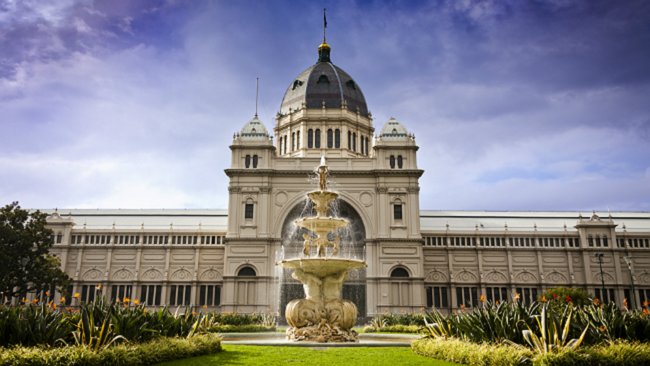Se-tenant: Isle of Man Arts Council, 60 Years (Isle of Man 2025)
Isle of Man Arts Council, 60 Years (Isle of Man 2025)
14 January (Isle of Man ) within release Isle of Man Arts Council, 60 Years (2025) goes into circulation Se-tenant Isle of Man Arts Council, 60 Years face value 7.05 Manx pound
| Se-tenant Isle of Man Arts Council, 60 Years in catalogues | |
|---|---|
| Colnect codes: | Col: IM 2025.01.14-02 |
Se-tenant is horizontal format.
Issued in panes containing four horizontal se-tenant strips of five.Also in the issue Isle of Man Arts Council, 60 Years (2025):
- Stamp - Community Arts face value 90;
- Stamp - Community Arts face value 90;
- Stamp - Concerts face value 90;
- Stamp - Concerts face value 90;
- Stamp - Dance face value 1;
- Stamp - Dance face value 1;
- Stamp - Education face value 2.15;
- Stamp - Education face value 2.15;
- Stamp - Exhibitions face value 1;
- Stamp - Exhibitions face value 1;
- Se-tenant - Isle of Man Arts Council, 60 Years face value 5*90;
- Se-tenant - Isle of Man Arts Council, 60 Years face value 7.05;
- Se-tenant - Isle of Man Arts Council, 60 Years face value 11.55;
- Stamp - Music face value 1;
- Stamp - Music face value 1;
- Stamp - Public Art face value 90;
- Stamp - Public Art face value 90;
- Stamp - Sculpture face value 90;
- Stamp - Sculpture face value 90;
- Stamp - Theatre face value 90;
- Stamp - Theatre face value 90;
- Stamp - Visual Art face value 1.90;
- Stamp - Visual Art face value 1.90;
Se-tenant Isle of Man Arts Council, 60 Years it reflects the thematic directions:
Art is a diverse range of human activities in creating visual, auditory or performing artifacts (artworks), expressing the author's imaginative or technical skill, intended to be appreciated for their beauty or emotional power. In their most general form these activities include the production of works of art, the criticism of art, the study of the history of art, and the aesthetic dissemination of art. The oldest documented forms of art are visual arts, which include creation of images or objects in fields including painting, sculpture, printmaking, photography, and other visual media. Architecture is often included as one of the visual arts; however, like the decorative arts, or advertising, it involves the creation of objects where the practical considerations of use are essential—in a way that they usually are not in a painting, for example. Music, theatre, film, dance, and other performing arts, as well as literature and other media such as interactive media, are included in a broader definition of art or the arts. Until the 17th century, art referred to any skill or mastery and was not differentiated from crafts or sciences. In modern usage after the 17th century, where aesthetic considerations are paramount, the fine arts are separated and distinguished from acquired skills in general, such as the decorative or applied arts.
Dance is an art form, often classified as a sport, consisting of sequences of body movements with aesthetic and often symbolic value, either improvised or purposefully selected. Dance can be categorized and described by its choreography, by its repertoire of movements or by its historical period or place of origin. Dance is typically performed with musical accompaniment, and sometimes with the dancer simultaneously using a musical instrument themselves.
The Royal Exhibition Building is a World Heritage-listed building in Melbourne, Victoria, Australia, built in 1879–1880 as part of the international exhibition movement, which presented over 50 exhibitions between 1851 and 1915 around the globe. The building sits on approximately 26 hectares (64 acres), is 150 metres (490 ft) long and is surrounded by four city streets. It is at 9 Nicholson Street in the Carlton Gardens, flanked by Victoria, Carlton and Rathdowne Streets, at the north-eastern edge of the central business district. It was built to host the Melbourne International Exhibition in 1880–81, and then hosted the even larger Centennial International Exhibition in 1888, and the formal opening of the first Parliament of Australia in 1901. The building is representative of the money and pride Victoria had in the 1870s. Throughout the 20th century smaller sections and wings of the building were subject to demolition and fire; however, the main building, known as the Great Hall, survived.
A musical instrument is a device created or adapted to make musical sounds. In principle, any object that produces sound can be considered a musical instrument—it is through purpose that the object becomes a musical instrument. A person who plays a musical instrument is known as an instrumentalist. The history of musical instruments dates to the beginnings of human culture. Early musical instruments may have been used for rituals, such as a horn to signal success on the hunt, or a drum in a religious ceremony. Cultures eventually developed composition and performance of melodies for entertainment. Musical instruments evolved in step with changing applications and technologies.



